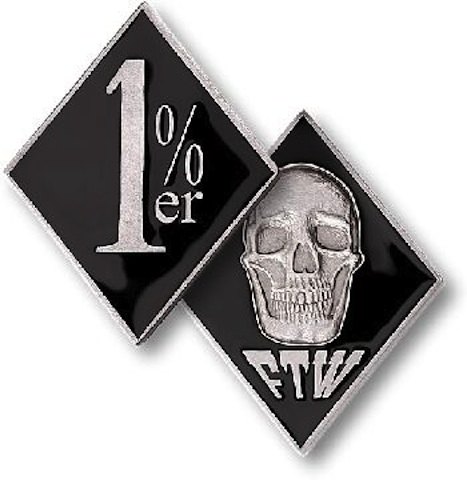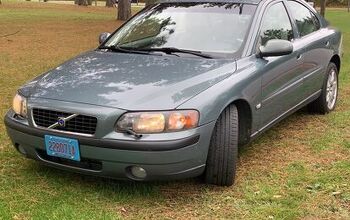GM Expects 1% Return Rate on 60-Day Satisfaction Guarantee
In three day’s time, General Motors customers can (may?) buy a new car from any of the nationalized automaker’s four remaining brands safe in the knowledge that they can (may?) return the car for a full refund. The exact details of the deal will hit GM stores this weekend. While we await a look at the fine print (a.k.a. “other restrictions”), I called up GM to get as much inside dope as I could snort. GM’s Director of Communications for Vehicle Sales, Service and Marketing, Pete Ternes, told me dissatisfied car owners can return their GM whip between 30 and 60 days after purchase, as long as the customer doesn’t damage the car or put more than 4k on the odo. The refund covers the purchase price and sales tax and . . . that’s it. If you’ve got negative equity rolled into the deal, you’re still on the hook to the finance company. If you go for any dealer add-ons, kiss that cash goodbye. This much we knew from the press release. Here’s the new bit: GM has budgeted for a three percent return rate, although Ternes says New GM expects the number of bounce-backs to be “one percent or lower.” So, what happens to the car and who pays for the depreciation?
“The vehicle then becomes a used car,” Ternes told me. “The dealer buys it back at a pro-rated price. Our insurance company [ Cynosure] covers the difference between the new and used price. That’s what the $500 discount, which the customer can take in place of the guarantee, is for.”
So, anyway, what’s the point of this thing?
“It’s designed to close the perception gap,” Ternes revealed. “The difference between the customer’s perception of GM vehicles’ quality and performance and the reality.”
Ternes said GM had considered other incentive programs to move the metal post-Cash for Clunkers (e.g., the return of 24-hour test drives). One main reason they chose the 60-day guarantee: it reflects Chairman of the Board Ed Whitacre’s personal feelings, his revelation, if you will, about GM products. When I pointed out that Whitacre had publicly declared, “I know nothing about cars,” Ternes terse reply: “Most consumers are the same way.”
Ternes meant that in the nicest possible way, but is there a nice way to say your customers don’t know from cars? I don’t think so.
More by Robert Farago
Latest Car Reviews
Read moreLatest Product Reviews
Read moreRecent Comments
- El scotto UH, more parking and a building that was designed for CAT 5 cable at the new place?
- Ajla Maybe drag radials? 🤔
- FreedMike Apparently this car, which doesn't comply to U.S. regs, is in Nogales, Mexico. What could possibly go wrong with this transaction?
- El scotto Under NAFTA II or the USMCA basically the US and Canada do all the designing, planning, and high tech work and high skilled work. Mexico does all the medium-skilled work.Your favorite vehicle that has an Assembled in Mexico label may actually cross the border several times. High tech stuff is installed in the US, medium tech stuff gets done in Mexico, then the vehicle goes back across the border for more high tech stuff the back to Mexico for some nuts n bolts stuff.All of the vehicle manufacturers pass parts and vehicles between factories and countries. It's thought out, it's planned, it's coordinated and they all do it.Northern Mexico consists of a few big towns controlled by a few families. Those families already have deals with Texan and American companies that can truck their products back and forth over the border. The Chinese are the last to show up at the party. They're getting the worst land, the worst factories, and the worst employees. All the good stuff and people have been taken care of in the above paragraph.Lastly, the Chinese will have to make their parts in Mexico or the US or Canada. If not, they have to pay tariffs. High tariffs. It's all for one and one for all under the USMCA.Now evil El Scotto is thinking of the fusion of Chinese and Mexican cuisine and some darn good beer.
- FreedMike I care SO deeply!

































Comments
Join the conversation
"There’s no way that the dealer can keep a trade around, just waiting for the 60 day grace period to expire." Trade in to dealer is unaffected.
Bought a car found out it did not handle well in the snow so I thought well I have 60 days I will go get somthing else...NO not that easy. When I was signing the papers a INCENTIVE was brought to me of $500.00 off my purchase price if I would not bring it back within the 60 days. I thought ok and if I take it back I will have to repay the $500.00. The catch is that if you sign that $500.00 gift then you WAIVE your right to return the vehicle in 60 days which was never mentioned to me nice smoke and mirrors. Both the dealer and GM basicly laughed and said too bad so this will be my last dealing with Government Motors (GM).